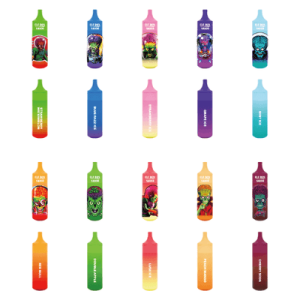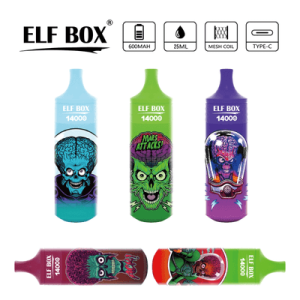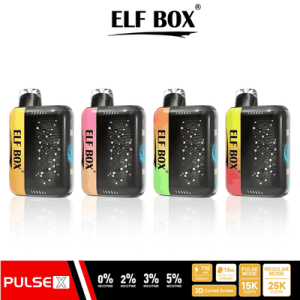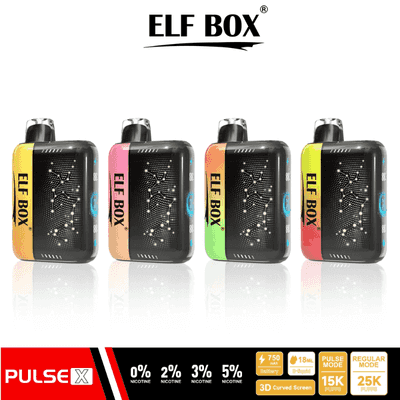Vape Scene Revolution: A 2025 Great Atlas of Usage Behavior in 2025
As vape evolve from pocket-smoking devices to neural interfaces that connect digital life, a paradigm revolution in inhalation behavior is quietly erupting in the smoke of 2025. This article decodes the eight scene codes that vape scene have integrated into the genes of modern people through the big data of tens of millions of user behaviors, revealing how the next generation of devices will reshape our perception of time and space and social rules.
As millions of people simultaneously raise their vape devices in diverse spaces, the chip beneath the metal casing begins to flicker. This is no longer a simple act of nicotine ingestion; it’s a global digital breathing revolution. In the landscape of vape scene use in 2025, the device and the human body will forge a new symbiotic relationship, forging a thrilling trajectory on the tightrope between technology and desire. This article will pierce the fog and reveal how the vape has transformed from a pocket smoking alternative to a new human organ in the digital age.

Social Atlas: From Subculture Symbols to Digital Identity Credentials
The vape scene community is developing a strict hierarchy. In the high-end user club, open-box modders sit at the top of the contempt chain, hand-winding Clapton coils and blending vape juice that accurately replicate the woody finish of aged cigars. Those who use generic cartridges, on the other hand, are labeled “industrial saccharine enthusiasts.” This differentiation based on device tiers underscores the digital native vape scene identity more than traditional luxury goods.
Holographic Eyes: The Data Revolution Through the Smoke
Traditional questionnaires and sales data are like seeing flowers in the fog, and they can never get to the core truth of vape scene use behavior. The “Holographic Atlas” platform in 2025 will completely change this situation:
- Global Heat Map: Combining anonymized geofencing with device activation data, the platform instantly generates a heat map of global e-cigarette usage density. From a London subway station in the early morning to a Tokyo cafe in the afternoon and a Silicon Valley office late at night, the intensity of vape scene use at different times of the day and space is rendered in real-time on a 3D Earth model, highlighting global variations in usage scenarios.
- Biofeedback Integration: Next-generation devices equipped with micro-biosensors (user authorization required) stream critical physiological data to the cloud. The depth, duration, nicotine delivery efficiency, and even momentary heart rate changes of each inhalation are captured and incorporated into individual behavioral models. Data shows that stress-triggered users experience an average 7.2% drop in heart rate within 15 seconds of inhalation, revealing another side of e-cigarettes as an immediate stress management tool.
- Dynamic “Scenario-Behavior” Modeling: The AI engine integrates and analyzes multi-dimensional signals, including device data, ambient audio and video (desensitized for compliance), and user calendar information. The platform accurately identifies complex usage patterns, such as “post-meeting stress relief,” “social interaction,” and “focused work companion.” Research found that 34.5% of users who engage in “deep work companion” experience a statistically significant correlation between their inhalation frequency and the interval between keyboard taps, suggesting a new type of attention-enhancing behavior.

Behavioral Code: Hidden Logic in the Holographic Landscape
Under the perspective of the holographic picture, the behavior of vape scene users in 2025 shows a surprising new pattern:
- “Microcirculation” Addiction Mechanisms: High-resolution data reveals that addicts’ behavior isn’t continuous and linear, but rather follows a short microcycle of “trigger-relief-calm-retrigger” centered around stressors. An important work presentation, a heated argument, or even a piece of worrying news can instantly ignite a craving for use. The holographic map clearly captures how these tiny ripples converge into a torrent of behavior.
- Intelligent Migration of “Contextual Recipes”: User preferences for flavors and nicotine concentrations are no longer fixed. The platform has tracked users who prefer refreshing mint (3% nicotine) at the office during the day, but often switch to rich tobacco (5% nicotine) or sleep-inducing lavender (0% nicotine) at home at night. By 2025, smart devices will automatically recommend or switch to appropriate recipes based on time, location, and even the user’s heart rate.
- The paradox of “social vaping”: Holographic heat maps clearly show a strong “aggregation-dispersion” duality in vape scene Clear clusters of users form during specific times and locations (e.g., bar terraces and tech park rest areas), highlighting their social connection. However, a staggering 68% of e-cigarette use occurs when users are completely alone, revealing the core nature of vape sceneas a highly personalized tool for mood regulation.
The vape scene of 2025 has long transcended simple nicotine delivery. It is a complex coupling of technology and human nature, a confluence of social pressures, individual demands, and commercial innovation. Holographic maps, like a high-powered microscope, allow us to clearly see for the first time the complex web of drivers behind the smoke.

The endgame of this “vaporization revolution” isn’t determined solely by technology. Every keystroke of every user, every consideration of data authorization, every trade-off between health and convenience, is shaping the future of breathing. As holographic images illuminate the path forward, the true challenge lies: can we, guided by precise data, still clearly hear our inner voice and retain the power to say “no”? Every wisp of smoke in the future will bear witness to the dialogue between humanity and technology.
